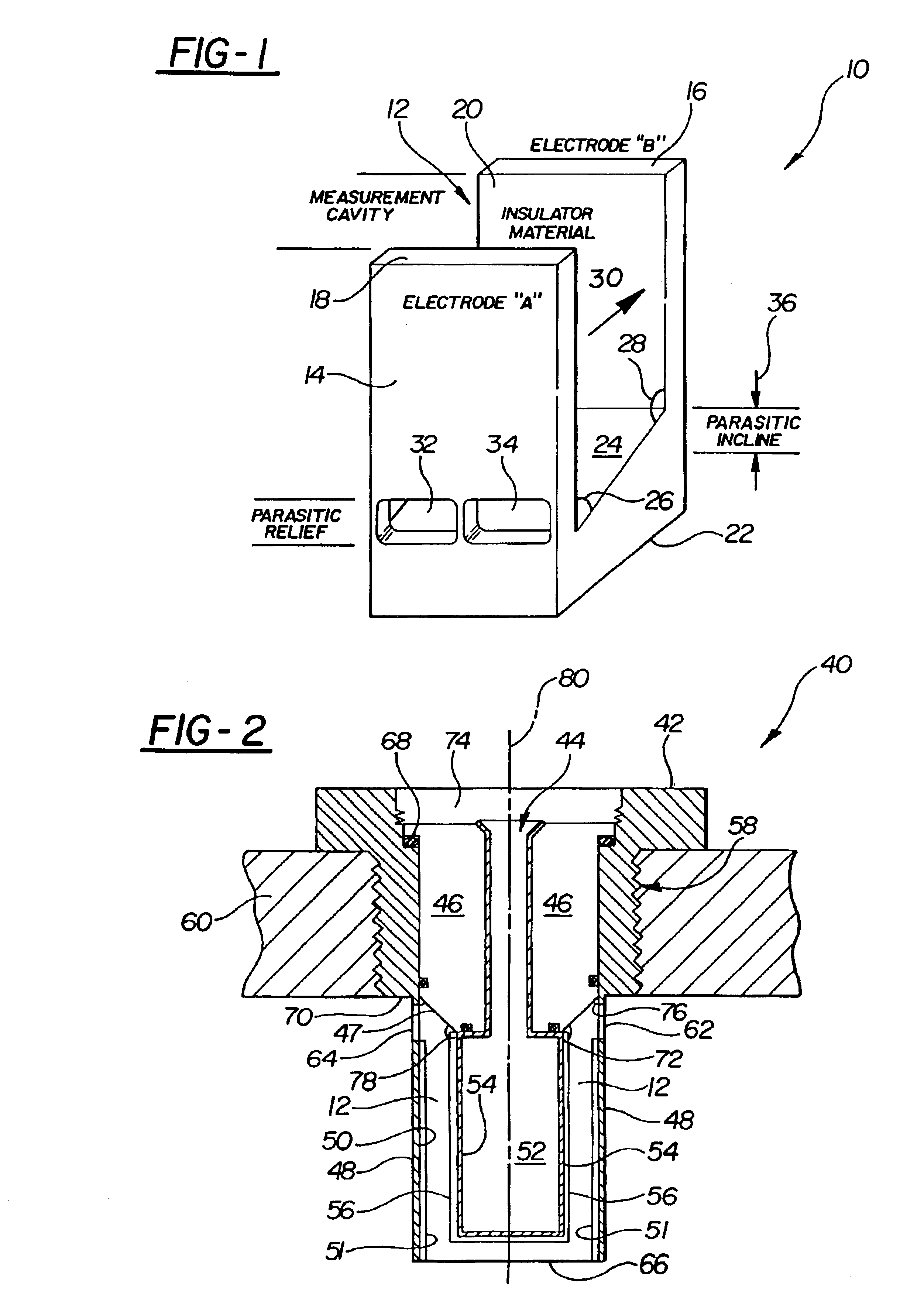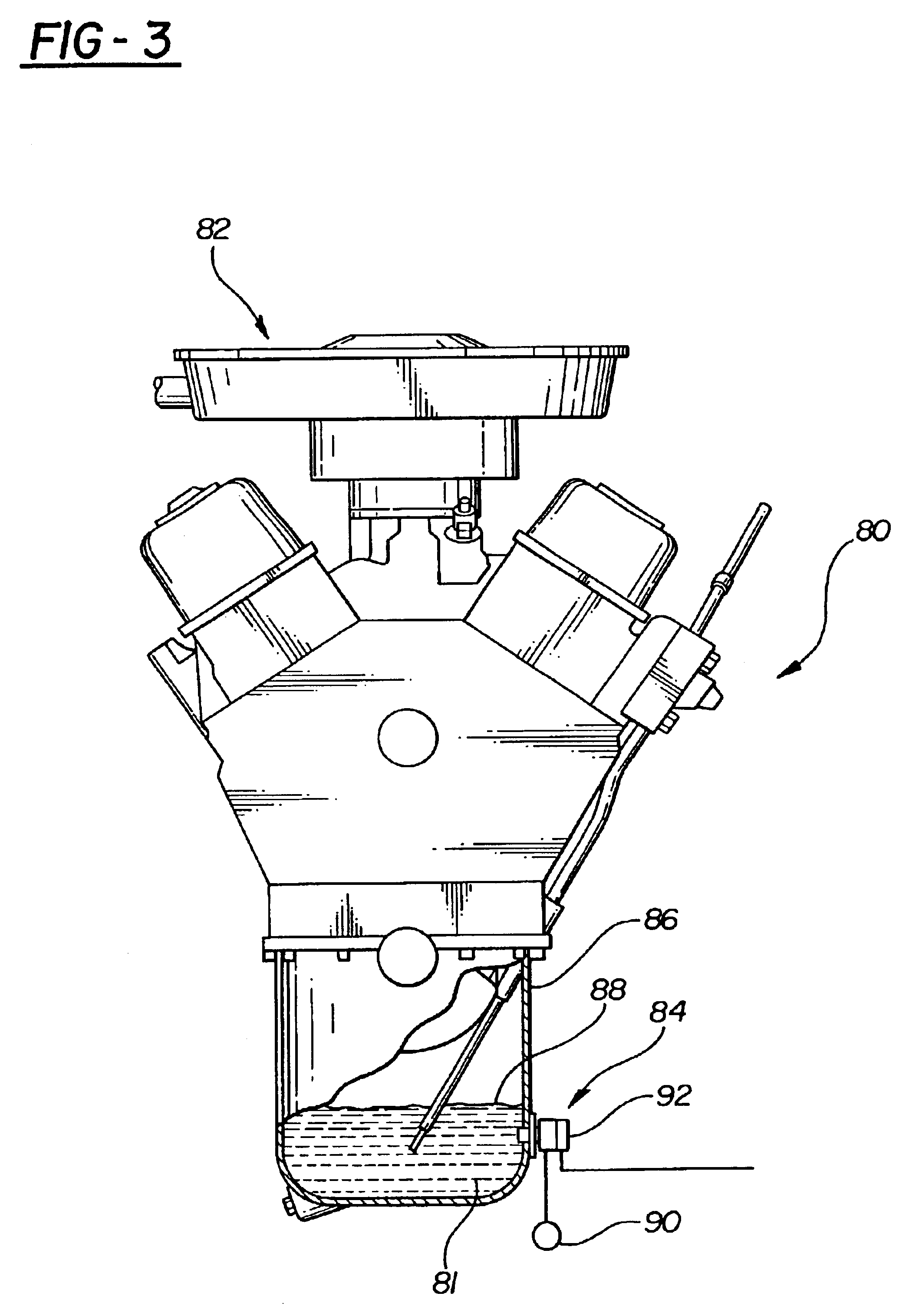Method and apparatus for stabilizing parasitic error capacitance in oil quality sensors
a parasitic error capacitance and sensor technology, applied in resistance/reactance/impedence, instruments, material analysis, etc., can solve the problems of increasing measurement error, increasing solution current, increasing polarity, etc., and achieve the effect of reducing measurement errors
- Summary
- Abstract
- Description
- Claims
- Application Information
AI Technical Summary
Benefits of technology
Problems solved by technology
Method used
Image
Examples
Embodiment Construction
Referring now to the drawings in detail, FIG. 1 shows a sensing device 10 of a liquid dielectric sensor for determining the quality of a liquid such as lubricating oil. The liquid is caused to flow through an electric field generated in a space 12 between a first electrode 14 and a second electrode 16. The pair of electrodes 14, 16 is preferably coupled to a power source (not shown) which generates a balanced alternating current that generates an electric field between the electrodes 14, 16. Each of the electrodes 14, 16 preferably includes an elongated metallic core covered by a dielectric material having a dielectric, fluid contacting surface 18, 20 respectively, that is adapted for direct contact with the liquid. The metal cores of the electrodes 14, 16 are not in direct contact with the liquid because it is desirable to have a solid phase nonconducting material such as Teflon® in direct contact with liquid for the purpose of reducing electrical double layer capacitance measureme...
PUM
| Property | Measurement | Unit |
|---|---|---|
| obtuse angles | aaaaa | aaaaa |
| obtuse angles | aaaaa | aaaaa |
| dielectric constant | aaaaa | aaaaa |
Abstract
Description
Claims
Application Information
 Login to View More
Login to View More - R&D
- Intellectual Property
- Life Sciences
- Materials
- Tech Scout
- Unparalleled Data Quality
- Higher Quality Content
- 60% Fewer Hallucinations
Browse by: Latest US Patents, China's latest patents, Technical Efficacy Thesaurus, Application Domain, Technology Topic, Popular Technical Reports.
© 2025 PatSnap. All rights reserved.Legal|Privacy policy|Modern Slavery Act Transparency Statement|Sitemap|About US| Contact US: help@patsnap.com



